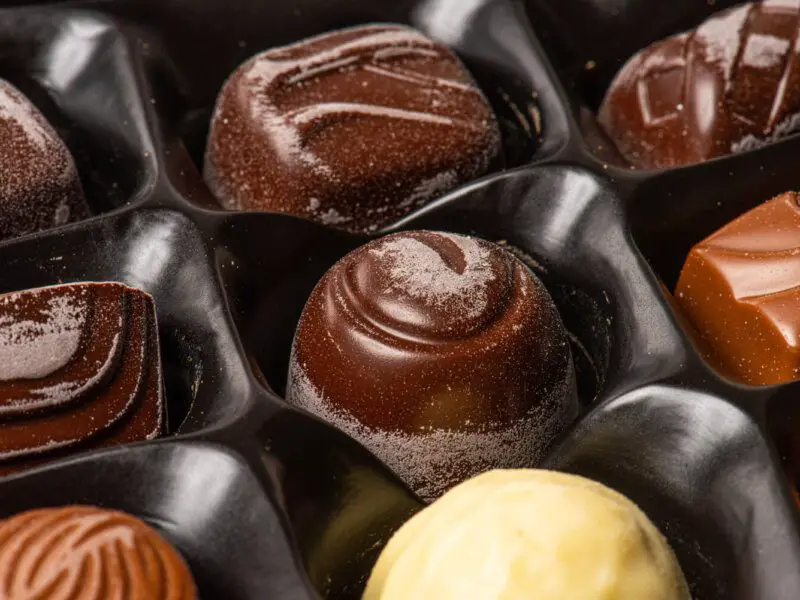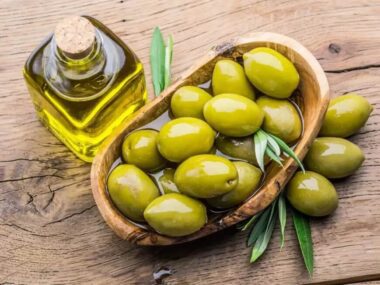Alright folks, we’re about to dive into the sweet and slightly mysterious world of chocolate. If you’ve ever opened a chocolate bar and noticed some weird stuff going on – like white streaks or fuzzy growth – then you’re in the right place. We’re going to unravel the secrets behind the enigmatic “Chocolate Bloom vs. Mold” scenario. And trust me, it’s a lot more interesting than it sounds!
Chocolate Drama: The Battle Between Bloom and Mold
You might think that any funky business on your chocolate means it’s time to toss it, but hold your horses. Not all chocolate issues are created equal. Let’s get into the nitty-gritty details of this sweet showdown.
The Great Chocolate Bloom
What is this ‘Bloom’ Anyway?
So, you’ve just unwrapped your favorite chocolate bar, and to your horror, there are these chalky, white streaks all over it. You panic, thinking it’s mold – but not so fast! This phenomenon is what we call “Chocolate Bloom.” But what’s it all about?
Chocolate bloom happens when the chocolate decides to throw a little temper tantrum, mainly because of temperature fluctuations and humidity. It’s the chocolate’s way of saying, “I’m not quite ready for this.” Blooming is a result of the fat and sugar molecules within the chocolate deciding to throw a little party and recrystallize. The result? Those pesky white streaks on the surface.
But here’s the kicker – chocolate bloom doesn’t mess with the taste or smell of your beloved treat. So, it’s still edible! But, let’s admit it, the aesthetics do take a hit. That uniform texture you were expecting? Well, it’s gone all grainy.
Sugar Bloom vs. Fat Bloom
Bloom is not a one-size-fits-all deal. There are actually two types of chocolate bloom – Sugar Bloom and Fat Bloom. Let’s break it down:
- Sugar Bloom: This one’s the result of too much humidity. The sugar in the chocolate decides to take a swim in the moisture, dissolves, and then decides to chill out on the surface. The result? Those eerie, whitish streaks and a texture that’s grainier than a sandy beach.
- Fat Bloom: Heat is the culprit here. Warm temperatures cause the cocoa butter (the fat) in the chocolate to have a separation anxiety episode. It decides to part ways with the other chocolate ingredients and appears as that whitish discoloration. When it solidifies again, it doesn’t play nice and forms a little party on the chocolate’s surface. But there’s a fix for this – it’s called tempering. You can melt and solidify the chocolate correctly to restore its texture.
The Art of Chocolate Preservation
Now that we’ve demystified the bloom, let’s talk about how you can keep your chocolate safe from its clutches. After all, prevention is the best cure.
Proper Storage: Just like us, chocolate has a sweet spot when it comes to temperature and humidity. Keep it in a cool, dry place, and if you’re serious about it, in an airtight container. That way, you’re giving your chocolate the VIP treatment it deserves.
Tempering Magic: If you’re looking to thwart fat bloom, proper tempering is your knight in shining armor. This process ensures the chocolate stays smooth and flawless. Don’t underestimate the power of a well-tempered chocolate bar.
The Dark Side: Chocolate Mold
Now, let’s talk about the villain in our chocolate story – Mold. Mold is a rare visitor to your chocolate party, but when it does show up, it’s quite the party crasher.
Mold on Chocolate: A Rarity
Mold is like the uninvited guest who shows up to the party no one knew about. It’s rare because chocolate doesn’t offer the warm, moist haven that mold loves. Chocolate’s low moisture content isn’t exactly welcoming for microorganisms.
As long as your chocolate bar remains unopened and snuggled in a dry place, you’re good to go. Mold won’t dare show its fuzzy self. But here’s where the plot thickens – if you’ve left your chocolate exposed or stored it in a damp environment, mold might just gatecrash the party.
Poor packaging, contamination during packaging, or low-quality ingredients can also play a role in the moldy drama. And here’s the real kicker – mold on chocolate doesn’t just mess with its looks, it messes with the flavor and aroma too. That’s the cue to say goodbye and toss it away. It’s not safe to eat.
In Conclusion: The Sweet and Bitter Truth
Chocolate bloom and mold are like the unwanted guests at your chocolate party. While bloom might mess with your chocolate’s appearance, it’s still a safe treat. But when mold shows up, it’s time to clean house – the chocolate’s house.
So, next time you unwrap your favorite chocolate bar and see those chalky white streaks, remember, it’s probably just chocolate bloom playing a little trick on you. Enjoy your delicious treat without worry.
And always remember, proper storage is the key to keeping your chocolate in its prime, away from the clutches of both bloom and mold. Now, go forth and savor your chocolates, knowing you’re well-equipped to handle the mysteries of bloom and mold.
Happy chocolate munching!



